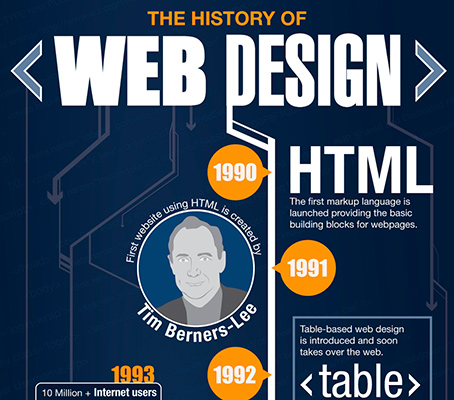Interested In Learning How Website Layout Has Advanced? Take A Trip With The Transformation
Interested In Learning How Website Layout Has Advanced? Take A Trip With The Transformation
Blog Article
Published By-Kinney Molina
In the past, web sites were straightforward and focused on information. Navigation was direct, and layout was for desktops. Currently, user experience is vital. Information guides layouts for simple navigation. Responsive formats suit different devices. Today, dark setting minimizes pressure, and minimalist food selections improve navigation. Interactive attributes engage users, and vibrant visuals stand out. AI assimilation enhances engagement. See just how layout has developed to boost your on-line trip.
Early Days of Website Design
In the early days of website design, simplicity preponderated. Internet sites were standard, with limited colors, typefaces, and designs. The emphasis got on offering info instead of flashy visuals. Individuals accessed the net through slow dial-up links, so rate and capability were essential.
Navigating menus were straightforward, typically situated at the top or side of the page. Internet sites were designed for desktop, as mobile browsing wasn't yet common. Web content was king, and developers prioritized easy readability over complicated style elements.
HTML was the main coding language used, and developers had to work within its restraints. mouse click the following website page and interactive features were very little contrasted to today's standards. Web sites were static, with little dynamic content or individualized customer experiences.
Surge of User-Focused Style
With the advancement of website design, a change in the direction of user-focused design concepts has ended up being increasingly famous. Today, creating websites that focus on customer experience is critical for engaging visitors and attaining business goals. User-focused layout involves comprehending the demands, choices, and behaviors of your target audience to tailor the website's design, material, and includes accordingly.
Developers now perform extensive study, such as customer surveys and use testing, to gather insights and feedback directly from customers. This data-driven technique helps in creating instinctive navigating, clear calls-to-action, and visually attractive interfaces that resonate with visitors. By positioning the customer at the center of the layout process, websites can supply a more personalized and pleasurable experience.
Receptive design has additionally become a crucial element of user-focused layout, guaranteeing that sites are optimized for different gadgets and display sizes. This versatility enhances ease of access and use, catering to the diverse methods individuals communicate with websites today. Essentially, the surge of user-focused layout indicates a shift in the direction of developing electronic experiences that prioritize the requirements and expectations of completion user.
Modern Trends in Web Design
Explore the latest patterns forming web design today. One famous pattern is dark mode design, offering a smooth and contemporary appearance while reducing eye strain in low-light settings. Another crucial trend is minimal navigating, streamlining food selections and enhancing user experience by focusing on essential elements. Integrating micro-interactions, such as computer animated switches or scrolling results, can produce a much more interesting and interactive website. Receptive style stays crucial, making sure smooth user experiences across different devices. Additionally, making use of strong typography and asymmetrical formats can add visual rate of interest and accentuate specific web content.
Incorporating AI innovation, like chatbots for client support or personalized referrals, boosts customer involvement and enhances procedures. Ease of access has also come to be a significant trend, with designers focusing on inclusive design practices to deal with diverse individual needs. Accepting sustainability by maximizing web site performance for speed and performance is an additional emerging fad in website design. Working together with customer responses and information analytics to iterate and enhance style continually is important for remaining relevant in the ever-evolving digital landscape. By welcoming these modern patterns, you can develop a visually attractive, straightforward web site that reverberates with your audience.
Final thought
As you assess the advancement of web site design from the very early days to currently, you can see exactly how user-focused style has actually come to be the driving force behind modern fads.
Embrace the journey of change and adjustment in website design, constantly keeping the individual experience at the center.
Tippingpointdigital
Remain existing with the most up to date trends and technologies, and never quit advancing your strategy to produce aesthetically magnificent and straightforward internet sites.
Advance, adapt, and develop - the future of web design is in your hands.
